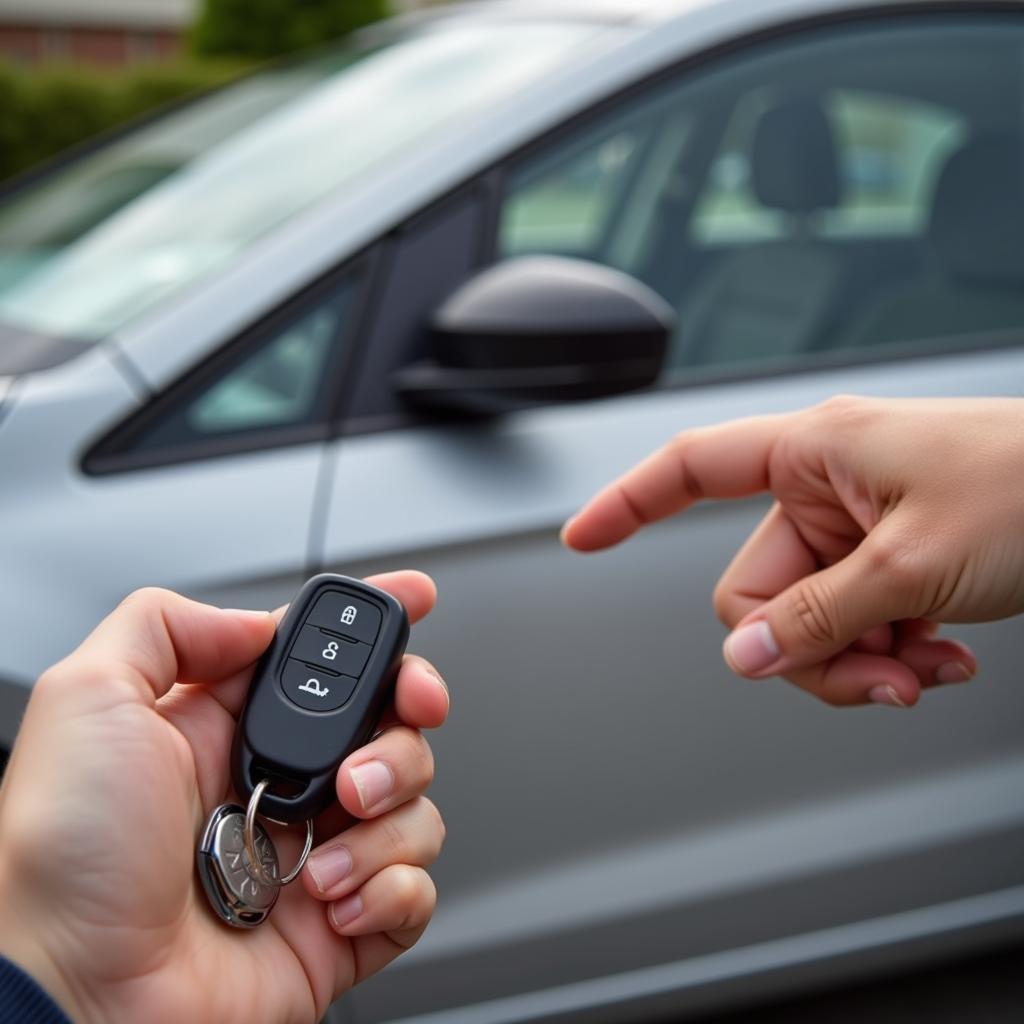Experiencing both an Airmatic warning and a brake warning simultaneously on your Mercedes-Benz W220 can be unnerving. These warnings often illuminate together, leaving you wondering if it’s a minor glitch or a serious issue. This article delves into the common reasons behind these concurrent warnings, equipping you with the knowledge to address the problem effectively.
Understanding the Systems: Airmatic and Brake System
Before exploring the reasons behind the warnings, it’s crucial to understand the systems involved.
The Airmatic suspension system is responsible for your W220’s smooth ride and adjustable height. It uses air springs instead of traditional coil springs, controlled by a network of sensors, a compressor, and an electronic control unit.
The brake system, on the other hand, ensures safe deceleration and stopping. It comprises components like brake pads, calipers, rotors, hydraulic lines, and sensors that work together to provide optimal braking performance.
While seemingly independent, these systems are interconnected in various ways, explaining why their warnings might appear simultaneously.
Common Culprits Behind the Dual Warnings
1. Low Battery Voltage: One of the most common reasons for both warnings to appear is low battery voltage. The W220’s sophisticated electronic systems require a stable and sufficient power supply. A weak battery can disrupt the proper functioning of both the Airmatic and brake systems, triggering the warning lights.
2. Faulty Brake Light Switch: The brake light switch plays a crucial role in activating your brake lights and signaling the Airmatic system to prepare for braking. A malfunctioning brake light switch can disrupt both systems, leading to simultaneous warnings.
3. Brake Fluid Leak: A leak in the brake system can trigger the brake warning light. If the leak is significant enough to cause a drop in brake fluid pressure, it can also impact the Airmatic system, triggering its warning as well.
4. ABS Control Module Issues: The ABS (Anti-lock Braking System) control module plays a vital role in managing both braking and suspension systems. Issues with the ABS module, such as software glitches or component failures, can trigger both warnings simultaneously.
5. Wiring Harness Problems: The wiring harness connects various components of the Airmatic and brake systems. Damaged or corroded wires within the harness can disrupt communication between these systems, leading to simultaneous warning lights.
 W220 Airmatic and Brake Warning Lights
W220 Airmatic and Brake Warning Lights
Diagnosing the Problem
Identifying the exact cause of the dual warnings requires a systematic approach:
-
Check Battery Voltage: Begin by checking your battery voltage using a multimeter. A reading below 12 volts indicates a weak battery that needs attention.
-
Inspect Brake Fluid Level: Check the brake fluid reservoir for sufficient fluid. If the level is low, it indicates a potential leak that needs immediate attention.
-
Scan for Diagnostic Trouble Codes: Use a professional-grade OBD-II scanner to retrieve diagnostic trouble codes stored in the car’s computer. These codes provide valuable insights into the specific areas requiring further investigation.
Seeking Professional Help
While some causes, like a weak battery, can be addressed with basic troubleshooting, others necessitate expert intervention. If you’re unsure about diagnosing or fixing the problem yourself, it’s crucial to consult a qualified Mercedes-Benz technician.
“Attempting DIY repairs on complex systems like Airmatic or the braking system without proper knowledge and tools can lead to further damage and safety hazards,” advises John Miller, a seasoned Mercedes-Benz technician with over 20 years of experience. “It’s always advisable to seek professional help for accurate diagnosis and repair.”
Conclusion
Encountering an Airmatic warning and brake warning concurrently on your W220 can be perplexing. However, understanding the potential causes empowers you to take the right steps towards resolution. Remember to prioritize safety and seek professional help if needed to ensure your Mercedes-Benz remains in optimal condition.

